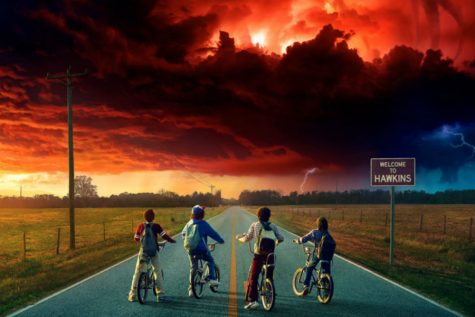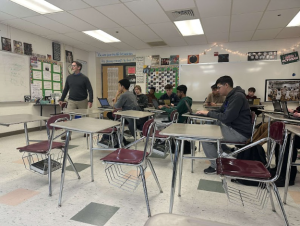Stranger Things 2 is a must-watch
November 13, 2017

After striking gold with its hit Stranger Things in October 2016, Netflix has upped the stakes and the suspense for its second season. Although featuring the same core cast and premise, Stranger Things 2 capitalizes on the audience’s familiarity with the series to delve into a more sinister plot from the very first episode.
Comprising nine episodes averaging 45 minutes each, Stranger Things 2 follows the residents of the small town of Hawkins, Indiana, in 1984 – one year after supernatural horrors plagued the town due to a federal experiment gone wrong. In season one, a young psychic-powered girl named Eleven (Millie Bobby Brown) opens an alternate dimension in the process of escaping the lab where she was raised. The monster that emerges kidnaps the young Will Byers (Noah Schnapp) and throws the lives of his loved ones into chaos.
By the end of the season, Eleven disappears after ending the monster while Will is recovered from the other dimension. After one year, everything seems to have returned to normal – except that Will continues to have visions of the alternate dimension, and he knows something is coming for the town.
I was initially drawn to Stranger Things not because of the premise, but because of the characters. Mike (Finn Wolfhard), Dustin (Gaten Matarazzo), and Lucas (Caleb McLaughlin), Will’s three best friends, were the ones moving the plot forward in season one. Their acting remains superb in season two, as they balance an awkwardness which just screams ‘middle school’ with a slowly growing maturity and awareness for the world around them. Dustin and Lucas, who at times seemed like Mike’s sidekicks in season one, come to the fore with clear-cut motivations and character growth of their own.
That being said, Mike took a bit of a backseat until the last two episodes of this season, which may be a sour point for fans of his uniquely empathetic character. Although this development is logical considering that many of his actions in season one were driven by the now-missing Eleven, it is still jarring to have the plot largely taken out of his hands. In the scenes that he does have, though, Wolfhard shines through with consistently sensitive and often heart-rending acting.
Will’s role in Stranger Things 2 is immense compared to in Stranger Things – although the first season revolved around him, he was present only in the occasional flashback. He is integrated seamlessly into the plot of season two, though, and Schnapp handles his emotional outbursts and fits of anger with ease. What he really does well, though, is the undertone of fear he incorporates into all his actions. Will’s conviction that something will go terribly wrong is what convinces the audience that something will go terribly wrong, even before the horror reveals itself.
Other than the boys, Brown continues to portray Eleven’s character with convincing self-discovery and angst, and Steve (Joe Keery) comes in with the character redemption of a lifetime. New characters such as Bob (Sean Astin) and Max (Sadie Sink) don’t detract from the show’s high acting caliber, but felt pointless until the latter half of the season.
Stranger Things 2 is bigger and badder than the original show, although it has enough sense to keep the lighthearted character-focused scenes that were a hallmark of Stranger Things. However, the second season forgoes quiet horror and suspense built from negative space to opt for more terrifying visuals, gore, and ear-shattering screaming. The addition of more traditional horror elements was a little disappointing since the franchise seemed to be headed more in the direction of science fiction, so those who hoped to see more exploration of alternate dimensions and psychic powers will probably be dissatisfied.
The pacing remains largely the same, cutting frequently between the main storylines without ever fully resolving one or the other. This style, while at times frustrating, is what allows all the plot points to interact without being clunky and awkward, especially considering its ensemble cast. The only time this changes is in the seventh episode, “The Lost Sister”, which received controversy for completely breaking the setting and mood of the show. I personally enjoyed the change of pace, and thought it solidified Eleven’s character and gave her motivation that she could not have found without leaving Hawkins.
The soundtrack acts as a constant (and very obvious) reminder of the show’s time period, featuring everything from the original Ghostbusters theme to The Police’s “Every Step You Take.” These peppy 80s numbers characterize the happier scenes while the original music, composed by Kyle Dixon and Michael Stein, uses sparse instrumentals and eerie rhythms to create a distinct feel for the supernatural and horror scenes.
The soundtrack effectively contrasts the two sides of the show, and, coupled with the frequent scene cuts, highlights the duality of the main characters’ lives: normal life goes on in Hawkins while sinister things slowly emerge from the periphery.
This duality is really what sets the Stranger Things franchise apart from anything else in its genre. The casting, cinematography, acting, and soundtrack are all geared towards creating a convincing small-town world, with closely-knit characters and budding romances, that acts as the centerpiece rather than the plot device for the supernatural aspects of the show. Our attachment to these characters’ relationships and dreams is what ultimately makes Stranger Things 2 not necessarily scary but terrifyingly emotional, and although the horrors they face are wildly unreal, they still manage to hit home.
9/10






